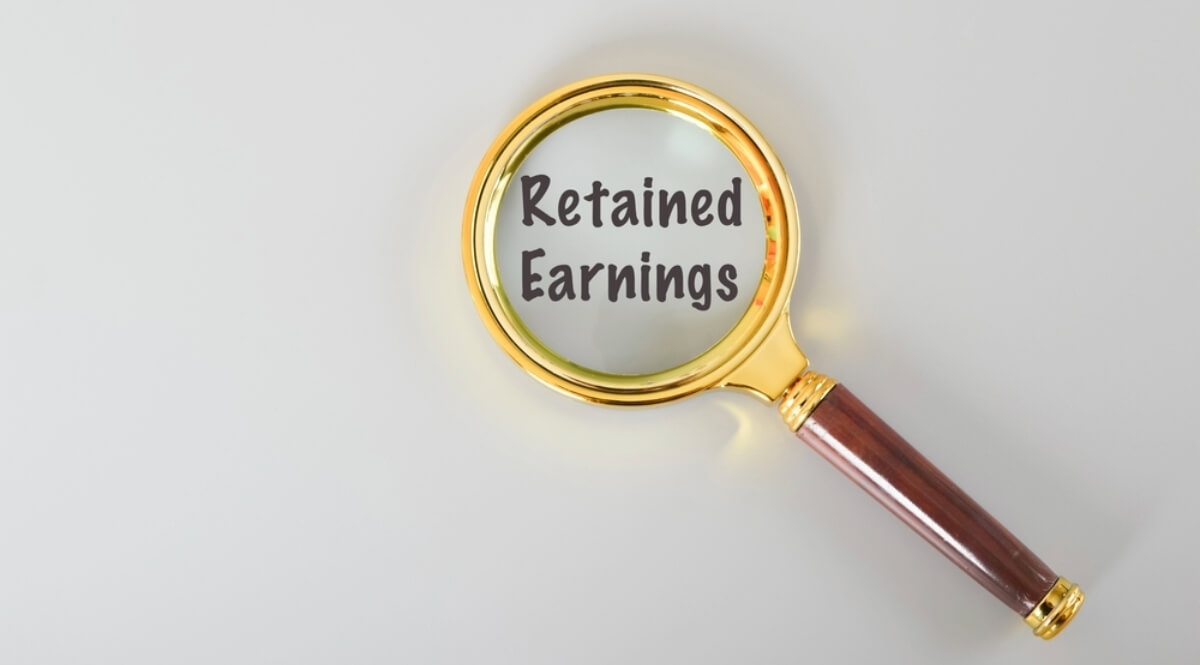
Retained Earnings in Financial Statements and Their Impact
Key Takeaways:
- Retained Earnings in the shareholders’ equity section signify undistributed net income, which is crucial for assessing financial health and reinvestment potential.
- Calculate Accumulated Earnings: To find these Earnings, start with the initial balance, add net income, factor in stock dividends, and subtract dividends paid out.
- Working Capital’s Role: Effective working capital management impacts Retained Earnings by freeing resources for growth and higher profits.
- On the income statement, negative Retained Earnings indicate past losses, possibly reflecting ongoing financial challenges.
- Retained Earnings carry over to the next fiscal year unless used for debt repayment or reinvestment, appearing on the balance sheet. Understanding this aids in evaluating financial stability and growth prospects.
Have you recently thought about what exactly Retained Earnings in financial statements mean? Why should you, as a professional, learn all about this? And what does it have to do with profits and dividends?
First, Retained earnings represent the company’s profits that haven’t been paid dividends. They go down when the company loses money or pays dividends and increase when it makes more profits.
But, to completely comprehend the meaning of these earnings in financial statements, let’s dig deeper and explain it from the beginning.
What is the formula?
The calculation of retained earnings, often derived from the retained earnings formula, plays a pivotal role in determining the net income that a company retains after meeting its dividend payments to shareholders.
This critical decision of whether to keep or distribute these earnings primarily rests with the company’s management.
Certain companies do not pay dividends or offer minimal amounts to pursue growth. Instead, they employ the statement of retained earnings to finance expansion endeavours like enhancing production, increasing staff, launching new products, or even executing share buybacks.
This earnings calculation, which considers net income over time, becomes essential in assessing a company’s financial health. It showcases the accumulation of retained earnings and illustrates the company’s capacity to reinvest in its operations or allocate funds to shareholders.
How to Calculate Accumulated Earnings the best?

If you were wondering how to calculate the company’s retained earnings, here is what you need to know:
Period retained earnings (RE) can be computed by considering the initial RE balance, the net income or loss, and stock dividends.
After this, one must subtract any dividends distributed. This is a crucial balance sheet section, especially for business owners.
Example
For example, let’s look at a specific period:
At the beginning of the reporting period, there was an initial RE balance of $5,000.Throughout the period, the business generated a net income of $4,000.
In addition, stock dividends were issued, impacting the calculation of retained earnings net income. Subsequently, dividends were distributed, leading to a reduction in these retained earnings by a certain percentage.
To calculate the accumulated earnings at the end of this period:
Accumulated Earnings = Initial RE Balance + Net Income or Loss – Stock Dividends – Dividends
Accumulated Earnings = $5,000 + $4,000 – (Stock Dividends) – (Dividends).
Is Retained Earnings a Form of Equity?
Retained earnings, typically regarded as a type of equity, find their place in the shareholder’s equity section of the balance sheet.
While they do not appear on the income statement as an asset, they can serve as a means to acquire assets, aiding a company’s expansion.
Understanding Negative Retained Earnings
As revealed on the income statement, negative retained earnings signify a precarious financial position, indicating that a company incurred losses in the preceding year, resulting in a deficit in net income.
A single year of negative earnings may not be a cause for grave concern. Still, if these negative retained earnings persistently accumulate, it suggests a prolonged inability to generate profits.
The Continuity of Retained Earnings
Indeed, these earnings carry over into the subsequent year unless the company has exhausted them by repaying debt or reinvesting in the business, as outlined in the income statement.
The starting earnings figure is subsequently included in the balance sheet for the following fiscal year.
What are retained earnings on a balance sheet?

On a balance sheet, Retained Earnings represent a company’s net income that has not been distributed to its shareholders as dividends.
It is a component of the shareholders’ equity section and records the company’s accumulated profits over time. These show how much of the company’s earnings have been retained and reinvested in the business rather than paid out to shareholders.
This figure is essential for assessing a company’s financial health and capacity to fund future growth and operations. It reflects the historical profitability and the amount of earnings that have contributed to the company’s overall equity.
What are the factors affecting Retained Earnings and Working Capital?
Working capital, comprising both short-term and long-term components, means a lot in comprehending the dynamics of a company’s financial health, especially concerning its retained earnings account.
One of the significant factors influencing the retained earnings account is the net profit, as it directly impacts the amount of money available to the company for various uses.
When a company generates a net profit, it has the potential to increase its retained earnings.
However, it’s essential to note that other financial obligations, such as debt repayment or dividend payments, can reduce retained earnings even when there’s a positive net profit.
The Crucial Role of Working Capital
Working capital, which refers to the diversity between a company’s short-term assets and liabilities, is crucial.
A healthy working capital position can support business operations and cushion unexpected expenses.
If a company effectively manages its working capital, it can free up resources to invest in growth opportunities, leading to higher net profits and, consequently, increased employed earnings.
Conversely, adequate working capital may help a company’s ability to meet its short-term obligations and reduce its capacity to invest in long-term growth. This can ultimately impact net profits and the retained earnings account negatively.
Managing working capital effectively is the key.
Managing working capital effectively can significantly impact a company’s ability to generate net profits and bolster its retained earnings.
Balancing short-term and long-term financial needs is key to optimizing the retained earnings account and ensuring the company’s overall financial stability and growth.
Bottom line
In summary, Retained Earnings, as found on a company’s balance sheet, represent the accumulation of net income that hasn’t been distributed as dividends to shareholders.
It’s a vital indicator of a company’s financial performance and ability to reinvest in its operations or allocate profits.
One should look in the shareholders’ equity section to find these earnings on a balance sheet, typically near the bottom. Understanding this type of earnings helps assess a company’s financial health and capacity for future growth and investment.





